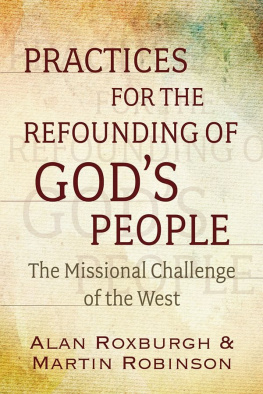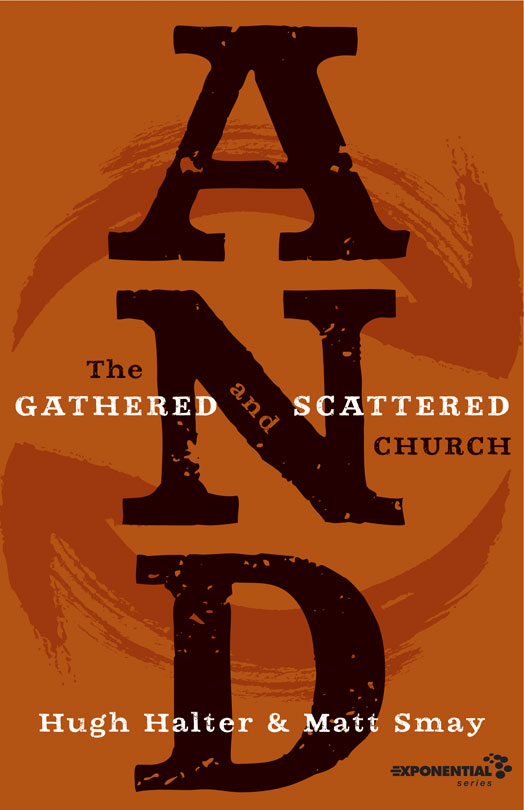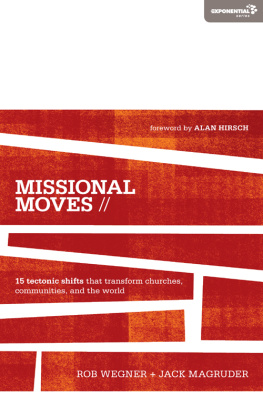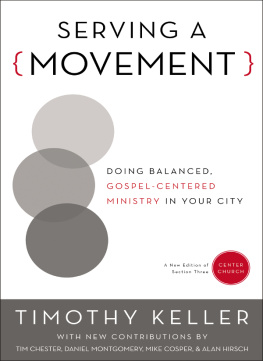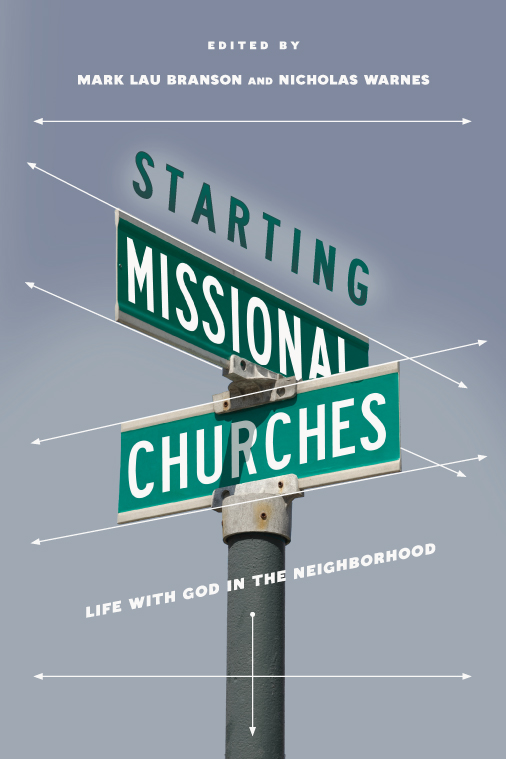Foreword
I received a big surprise recently while sitting in a meeting with a group of denominational leaders. We were discussing church planting when a prominent leader in the room announced, We will spend no more money on traditional church planting. The failure rate is over ninety percent. No one is willing to give us funds for this kind of effort anymore.
It did not surprise me that this one person would say this. I was stunned, however, to see that almost everyone in the room agreed.
Can it be any clearer? The landscape has changed for church planting.
For years, to expand their reach into new neighborhoods and population groups in North America, denominational groups would send small groups of people into a locale, set up a worship service and provide a list of support services for families. They would announce their arrival with some advertising and then wait for people to gather at a public launch service. A new church would be born.
There are now, however, fewer and fewer Christians even remotely interested in another local franchise of a church. Once a ready market of Christians eager for these new churches, North America has become a mission field. What used to work in starting new churches now fails. We need a new practice of church planting for the challenges of a post-Christianized society.
The good news is that, beneath the radar of most large church-planting organizations and outside the purview of the 100 largest churches in America lists, hundreds of new churches are springing up in North America that look very different from the church plants of the past. They begin small and relationally. They live life among their neighborhoods. Viewing the incarnation as the way God works, they go be present with people, not offer services to people. Inspired by an enlarged view of Gods triune work in the world, they seek to discern God at work preveniently where they are living. They are there to join in Gods mission. And so a missional movement of churches is now sprouting up all over North America.
Mark Lau Branson and Nick Warnes are two veteran grassroots workers in this movement. In this book they open a window into what God is doing in these churches. Bringing their theological skills and their on-the-ground experience, they give us a way to understand missional and incarnational that helps us reflect on what is happening in church plantingas well as what were doing in our own church life. Most importantly, they let the stories tell themselves. In so doing, this book funds our imagination for what church planting can be: a renewal of mission for North America.
For hundreds of years God has rebirthed his church through movements. Whether it was the monastic movements, pietist movements or frontier revivals, the church has always been renewed through the forming of new communities that call the rest of us to repentance and renewed commitment to live into the fullness of the gospel for Gods mission in world. I believe the missional church movement is one such renewal movement in our time. And there comes a time in all such movements when the stories must be told if we are to learn and grow with them. I believe now is the time for some of these stories to be told. Branson and Warnes have collected some of these stories. They have provided a framework to understand them. They are doing the work here that is so essential for this next leg of the journey that is the missional church.
The only question is, will we go with them? Will we as Christians, disciples of Jesus, leaders and pastors join them in the vast new territories of Gods mission in North America and beyond? I pray it be so. I pray that the stories of this book be multiplied a hundred times over.
David Fitch
Orientation and Appreciation
Mark Lau Branson and Nick Warnes
We would like to provide a brief overview of this book. Starting Missional Churches is a collection of stories of new and diverse churches in the United States. The stories are preceded by two opening chapters that frame key issues, and followed by a final chapter that reflects on the stories in light of a set of priorities that we are advancing.
In the opening chapter, Nick Warnes describes some of the social, practical and theological challenges that we face regarding the need for an increased pace of planting. He notes how earlier priorities and methods do not provide opportunities for enough new churches, especially when compared to growth in population densities in the United States. He particularly notes the emphasis on suburban locations, the problems created when new churches come primarily from splits, the misplaced dependence on expert strategies, and assumptions that charismatic leaders are needed to attract new congregations. In chapter two, Mark Lau Branson brings the missional church conversation into an engagement with this church-planting conversation. He focuses on the centrality of discerning Gods initiatives in a particular context, a priority on engaging the neighbor as a subject rather than as an object, the need to cross ethnic and economic boundaries, and the importance of plural leadership. These missional priorities are matters of theology and cultural context, with significant implications for how leadership teams begin their work.
The seven stories, told by pastors who lead local teams, provide geographical and denominational diversity. These are not new models to be packaged and transplanted; rather, they give readers insights into the processes and lessons of each specific, concrete, local initiative. Those of us who wrote these chaptersthe stories, the frameworks and the reflectionshope that we have provided encouraging, enlightening narratives for others who want to be reflective and active in starting missional churches.

We also want to say thank you. Nick and six other church planters took the time to tell their stories. (There are notes on each writer beginning on page 209.) We asked them to be reflective and to provide more than narratives about their successes. We wanted to hear the voices of their leadership teams and of their neighbors. We wanted to know what challenges they faced, how and when they turned corners, what processes they engaged to discern their priorities and steps, and how they were changed by those they met. We are grateful that they decided to work with us, and that they committed time, thoughtfulness and prayer to this work. We are also grateful for the teams and neighbors around thembecause the stories would not be worth telling without these numerous participants. We are grateful also to Dave Zimmerman at InterVarsity Press, who was constant with guidance and encouragement, and to David Fitch and Alan Roxburgh for contributing the foreword and afterword, respectively.



